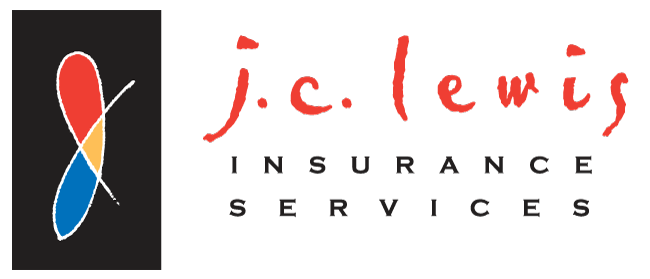Almost everyone has teeth, hopefully, and most of us need to have ours worked on periodically.
For those with naturally beautiful smiles, strong healthy teeth, and no hereditary dental issues, this can be a simple matter of keeping up on bi-annual check-ups.
For most of the rest of us, however, our dental visits can be more frequent and more involved. And, as we get older, which everyone does, dental work can become quite costly, as well.
As an article at Investopedia points out,
“Proper dental care can be expensive, and this is especially true if you need work beyond basic cleanings and preventive care. A report from the American Dental Association says that, on average, adults ages 19 to 34 spend approximately $492 on dental work within a year, whereas those ages 35 to 49 spend $598. Annual spending surges to $785 on average for individuals ages 50 to 64, which reflects the fact that older Americans tend to need more dental work.”
Which is why a dental insurance plan can be essential.
Not All Dental Insurance Plans are the Same
What type of costs can you incur without dental insurance?
Treatments such as crowns, implants, and root canals can add up to thousands, even tens of thousands of dollars. And, without insurance to foot a major portion of the bill, a major series of dental work can create a financial crisis for many people.
The truth is, even with insurance, a typical share-of-cost can be quite hefty depending on the treatment. For example, a simple crown can easily cost a patient over $1,000 even after their insurance plan has covered its share.
Which brings us to the issue of various types of dental plans.
According to the American Dental Association (ADA) there are essentially eight different dental plan structures:
- Preferred Provider Organizations (PPO)
- Dental Health Maintenance Organizations (DHMO)/Capitation Plans
- Indemnity Plans
- Direct Reimbursement (DR®)
- Point of Service Plans
- Discount or Referral Plans
- Exclusive Provider Organizations (EPO)
- Table or Schedule of Allowances Plans
However, not all of these types of dental plan structures are available in California. In fact, according to Covered California’s Health for California website,
There are two basic types of dental coverage in California:
- DMO (Dental Maintenance Organization)
- This type of plan works similar to an HMO (Health Maintenance Organization) in that you would, mainly, receive services from a primary dental physician, who would coordinate your dental care and refer you to specialists in the network, as needed.
- PPO (Preferred Provider Organization) or PDN (Participating Dental Network)
- With PPO or PDN plans, the patient chooses the dentist they want and the dental coverage follows them. As an option, patients in this type of plan may also see a networked dentist and pay lower fees for services.
Considering DMO/DHMO and PPO Dental Insurance Plans

Generally speaking, DMO plans are more cost-effective, typically have lower monthly premiums, and you can expect to pay less out-of-pocket.
While PPO dental plans offer greater flexibility they tend to have higher monthly premiums, as well. But you can use providers both in and out-of-network without a referral. In addition, your out-of-pocket costs can also be higher with a PPO plan.
Most dental insurance experts agree that it is not a simple matter of one type of plan being “better” than the other. What can be seen as the “best” dental insurance plan for you depends largely on your needs and financial ability.
Typically, if you are young, healthy, and only insuring yourself, a DMO or DHMO plant can be more than sufficient. With lower overall costs, the lack of choice of providers is a small price to pay.
On the other hand, if you have a history of dental issues, or are looking to insure yourself and your family, a PPO dental plan can be a much better investment.
Here is a more extensive summary of these two options provided by the American Dental Association:
Under a DHMO, or capitation plan, contracted dentists are “pre-paid” a certain amount each month for each patient that has been designated or assigned to that dentist. Dentists must then provide certain contracted services at no-cost or reduced cost to those patients. The plan usually does not reimburse the dentist or patient for individual services and therefore patients must generally receive treatment at a contracted office in order to receive a benefit.
A PPO plan, on the other hand, is regular indemnity insurance combined with a network of dentists under contract to the insurance company to deliver specified services for set fees and according to the provisions of the contract. Contracted dentists must usually accept the maximum allowable fee as dictated by the plan, but non-contracted dentists may have fees either higher or lower than the plan allowance.
Ultimately, choosing the best dental insurance plan should involve some research and making use of an independent resource to answer your insurance coverage questions. At J. C. Lewis, we invite you to call or visit us and let us help you navigate your dental insurance plan options.
The True Cost of Ignoring Dental Care
Think skipping the dentist saves you money? Think again. That tiny cavity you’ve been ignoring? It could morph into a full-blown root canal or, worse, an extraction—costing you thousands. According to the National Institute of Dental and Craniofacial Research, a staggering 27% of adults aged 20-64 have untreated decay, leading to costly emergency visits. The kicker? Many of these issues could’ve been prevented with routine check-ups. Preventive care isn’t just about clean teeth—it’s about dodging financial nightmares.
Annual Maximums: The Insurance Trap No One Talks About
Dental insurance sounds great until you hit your annual maximum—a sneaky little cap that limits how much your plan will actually cover. Most policies hover between $1,000 and $2,500, but here’s the problem: a single dental implant can cost up to $6,000! What happens when you need multiple procedures? You pay out of pocket. Some newer plans offer “rollover benefits,” letting you carry unused funds into the next year—a game-changer if you know major dental work is on the horizon.
Dental Discount Plans: A Hidden Goldmine?
No traditional insurance? No problem—dental discount plans are shaking up the industry. Unlike insurance, these aren’t about coverage—they’re about slashing costs upfront. By tapping into pre-negotiated rates, members score 20-50% off procedures like crowns, braces, and veneers. The American Dental Association reports that self-employed professionals and retirees are flocking to these plans as a budget-friendly alternative. In some cases, the savings are so good, people are ditching insurance altogether.
Looking for a Great Dental Insurance Plan? We Can Help!
J.C. Lewis Insurance has been a local, family-owned firm based in Sonoma County since 1979, and our team of expert brokers offers individual and family dental insurance plans.
In addition, we provide small business and individual health insurance plans from only the leading health insurance carriers that are licensed to do business in California.
In addition to being experienced, professional brokers, we are licensed and certified by each of these insurance carriers to offer coverage to individuals, families, and small group employers in addition to Medicare supplemental and prescription drug plans for seniors.
When you’re shopping for vision, dental, or health insurance for your employees, or for you and your family, you probably have several questions and concerns.
At J.C. Lewis Insurance Services we welcome your questions about insurance coverage and you can be confident that we will help you find the right solution.



